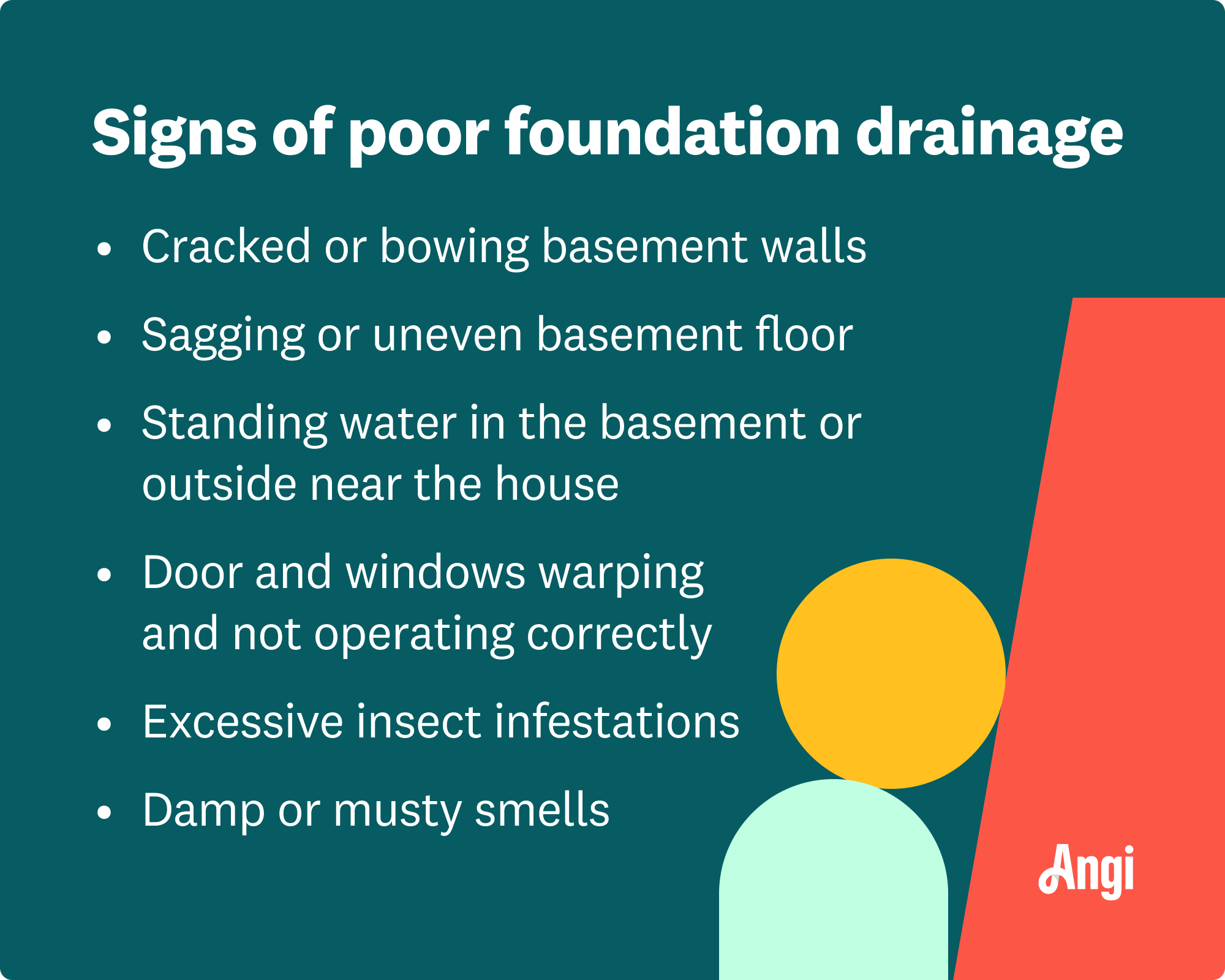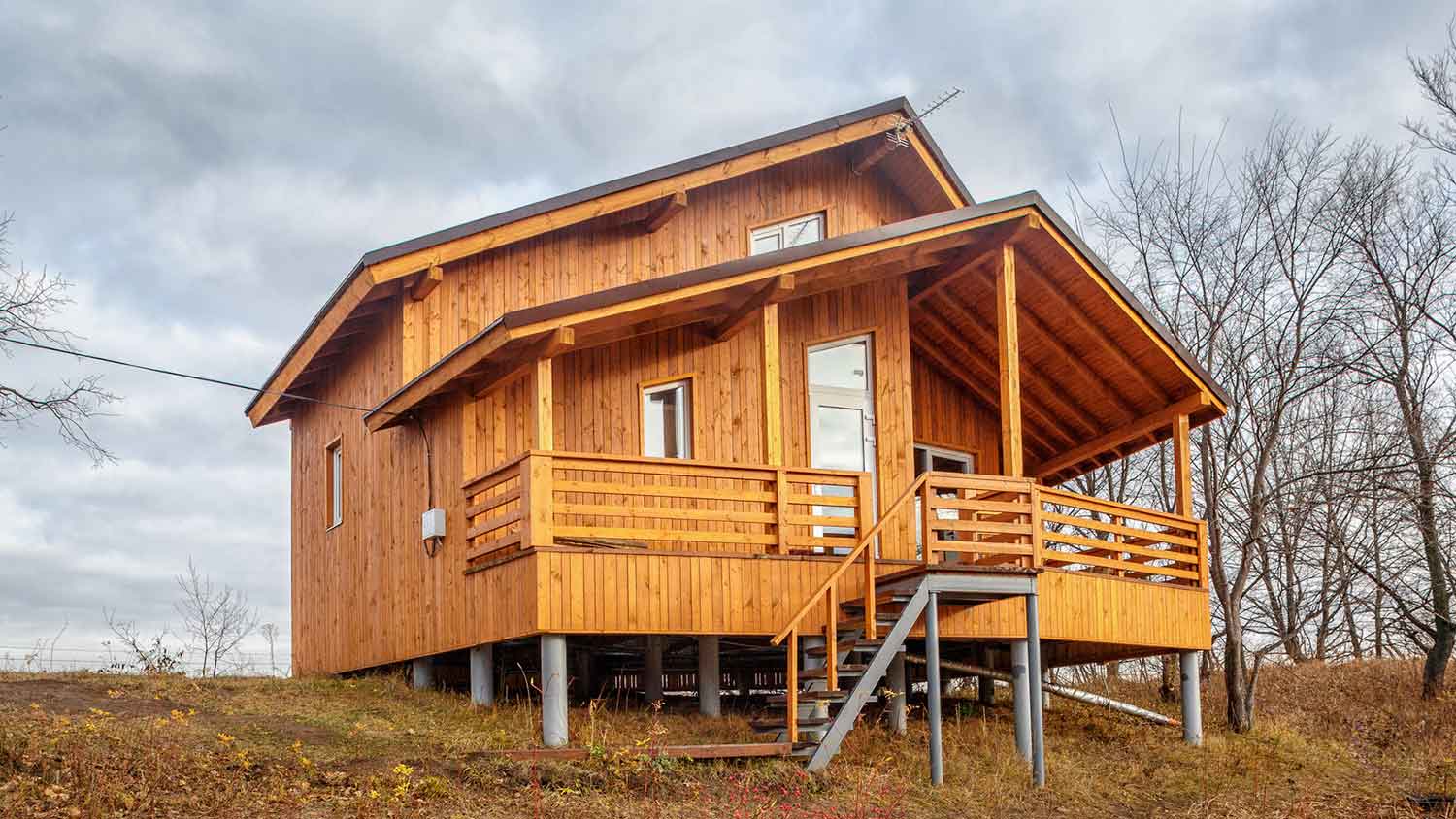What to Know About Putting a French Drain Around a Foundation
Watch your foundation troubles go down the drain


A French drain can help protect your home's foundation from damage
A French drain costs an average of $9,250 to install
Gravity is the critical element of the operation of a French drain
French drains work well in many situations and not at all in others
While French drains can be highly effective, there are alternatives
Water is one of your home's foundation's worst enemies. Foundation drainage issues can cause far more damage than just having a little water show up in your basement or crawl space. While advanced foundation troubles are urgent matters, the structure under your home can be damaged for years before becoming apparent. If your home rests on damp ground or has poor drainage, it could require a French drain around the foundation.

What Is a Foundation French Drain?
A French drain uses gravity to redirect water away from your home's foundation. It consists of a trench, perforated pipe, landscape fabric, rocks or pebbles, a slope, and sometimes topsoil, which help to move water away from the foundation before it has a chance to cause damage.
Considered a method of active basement waterproofing instead of a passive water barrier, most French drains exist outside of the home's foundation. However, interior French drains can be used to manage water issues below the home's basement floor.
The concept is that water on the lawn's surface or water that percolates from below enters the pipe and flows under gravity down a slope in the drain's construction. The drain then directs the water to a location below and away from your home's foundation.
The Cost of a Foundation French Drain
Like the cost of basement waterproofing, the cost of a French drain system can increase rapidly depending on soil conditions, property dimensions and attributes, and the nearest low spot away from the house.
A small, simple, DIY French drain may only cost you around $500, while an extensive system that drains water away from around an entire foundation can cost as much as $18,000. On average, homeowners spend $9,250 to install a French drain along a home’s foundation.
Pros and Cons of Putting a French Drain Around Your Foundation
Foundation French drains are usually highly effective at directing excess water from a home's below-ground structure. However, like any water problem solution, one type of fix rarely works on any home or property.
Pros of a Foundation French Drain
Effectively removes water from around a home's foundation
Prevents numerous standing water and water infiltration problems
Long life span—up to 40 years
Can double as an effective water-erosion control
Works in most soil types with proper construction
Cons of a Foundation French Drain
Requires an acceptable place for excess water to drain into
Some municipalities don't allow French drain construction
Installation is labor- and design-intensive
Underground pipe clogging is possible
Requires a building permit, site plan, and underground utility location to install
How Is a French Drain Installed Around Your Foundation?

Installing a French drain requires a bit of planning and plenty of labor. Start by choosing a place for excess water to go that is lower in elevation than the surrounding area.
In some municipalities, draining water into the city storm sewer is acceptable. However, check with your local permitting office before making that assumption. While you're there, be sure to get a building permit for the project and call 811 for an underground utility location inspection before you dig.
"Maintaining the right slope and proper landscaping is crucial. The ground around your home should slope away from the foundation to prevent water from pooling. Don’t plant trees too close to your house because their roots can damage the foundation. Avoid heavy watering near the foundation and use appropriate mulch and ground cover to manage moisture levels."
— Tim O'Shea, The Build Pros
You’ll first need to dig a trench near the foundation's exterior that slopes at least ⅛ inch per foot from the highest point to away from the house at the final drainage location. Dig the trench roughly a foot wide and 18 to 30 inches deep. Then, pour gravel into the trench bottom 3 to 6 inches deep and line it with water-permeable landscape fabric, leaving at least 1 foot of extra fabric to wrap the pipe and more gravel later.
Next, lay the perforated pipe on the landscape fabric over the entire length of the trench. Install a cleanout port at the highest point of the pipe and keep the open end of the cleanout flush with the surrounding ground cover. Pour another couple of inches of gravel over the pipe and wrap them with the fabric. Depending on your soil conditions and drainage issues, you may be able to backfill the trench with topsoil, but most situations require backfilling with some mix of sand, gravel, and topsoil.
French Drain Alternatives
While foundation French drains are highly effective at reducing standing water and groundwater problems, there are alternatives you can consider if that solution doesn't work for your home. Your local foundation drain installation company can offer several options beyond French drains that will take care of your home's water problem one way or another, but some popular alternatives include:
1. Landscaping
Often, you can eliminate standing water and excessively wet soil conditions by regrading your yard's landscaping. Creating a slope away from the house, adding a valley or swale to direct water to lower locations, or adding terraces with or without retaining walls are all excellent solutions that are relatively maintenance-free once complete.
2. Sump Pump
Installing a sump pump may be an option to battle against wet soil conditions. While the best time to install a sump pump system is during the home's initial construction, it's possible, and even common, to retrofit them. Consulting a foundation drainage specialist is the best option to ensure your system is effective for your situation.
3. Create a Wetland
One option in the battle against intrusive water? Simply don’t engage. Take advantage of a low-elevation spot on your property and direct water to it through landscaping, creating an aesthetically friendly bog or small wetlands with water-loving plants.
4. Interior Foundation Drain
In some situations, an interior foundation drain may be more appropriate than an exterior French drain. Often working with a sump pump system, an interior foundation drain goes below your basement's floor around its perimeter. It works similarly to a French drain in that it carries excess water to a low spot or a basin for removal by a sump pump.
5. Trench Drain
Numerous types and styles of trench drains exist. Like a French drain, a trench drain works with gravity to divert water from the foundation. However, a trench drain is exposed to the surface instead of underground and consists of an elongated grate and gutter to capture surface water and drain it away.
6. Dry Well
A dry well is a deep hole filled with gravel that collects water from the surface, thus controlling standing water and water runoff. Once the water reaches the well, it disperses slowly into the surrounding soil, reducing the chances of a great deal of water reaching your foundation all at once.
How to Know if a French Drain Is Right for Your Foundation
While installing a foundation French drain isn't the least costly way to control water around your home, it's highly effective under the right circumstances. Compared to a one-time cost of foundation repair, spending a large sum on a French drain might seem unnecessary.
However, if your property fits the profile for benefiting from a French drain system and has the potential for water problems, a French drain is likely worth the cost, especially compared to multiple foundation repairs and the associated hassles.
Frequently Asked Questions
A French drain should be 4 to 6 feet away from your foundation in most cases. However, the right distance for your home depends on the landscape and how bad your water problem is. Ask a foundation drain installation professional near you for advice on your exact situation.
Yes, in most cases, a French drain is safe to put around your foundation, provided your landscape allows for it. If you don’t have the proper space surrounding your foundation or there are rocks that would make excavation difficult, a French drain may not be right for your home. Ask a foundation drain specialist what type of drain they recommend for your foundation.
A French drain is a type of foundation drain — there are numerous other types of foundation drains. Some other common foundation drain solutions are sump pumps, footing drains, and surface drains.





- How Deep Is a French Drain?
- Who Installs French Drains? A Handy Hiring Guide
- Types of Foundation Drainage Systems: Pros, Cons, and Uses
- Best Pipe for French Drains: A Complete Guide
- 8 Tips to Avoid Foundation Repairs
- Can Standing Water Damage Your Foundation?
- How to Waterproof a Foundation and Keep Moisture Away
- Your Guide to Dealing With Foundation Drain Issues
- 7 Reasons Water Is Seeping Through Your Basement Floor
- 11 Warning Signs of Foundation Issues










